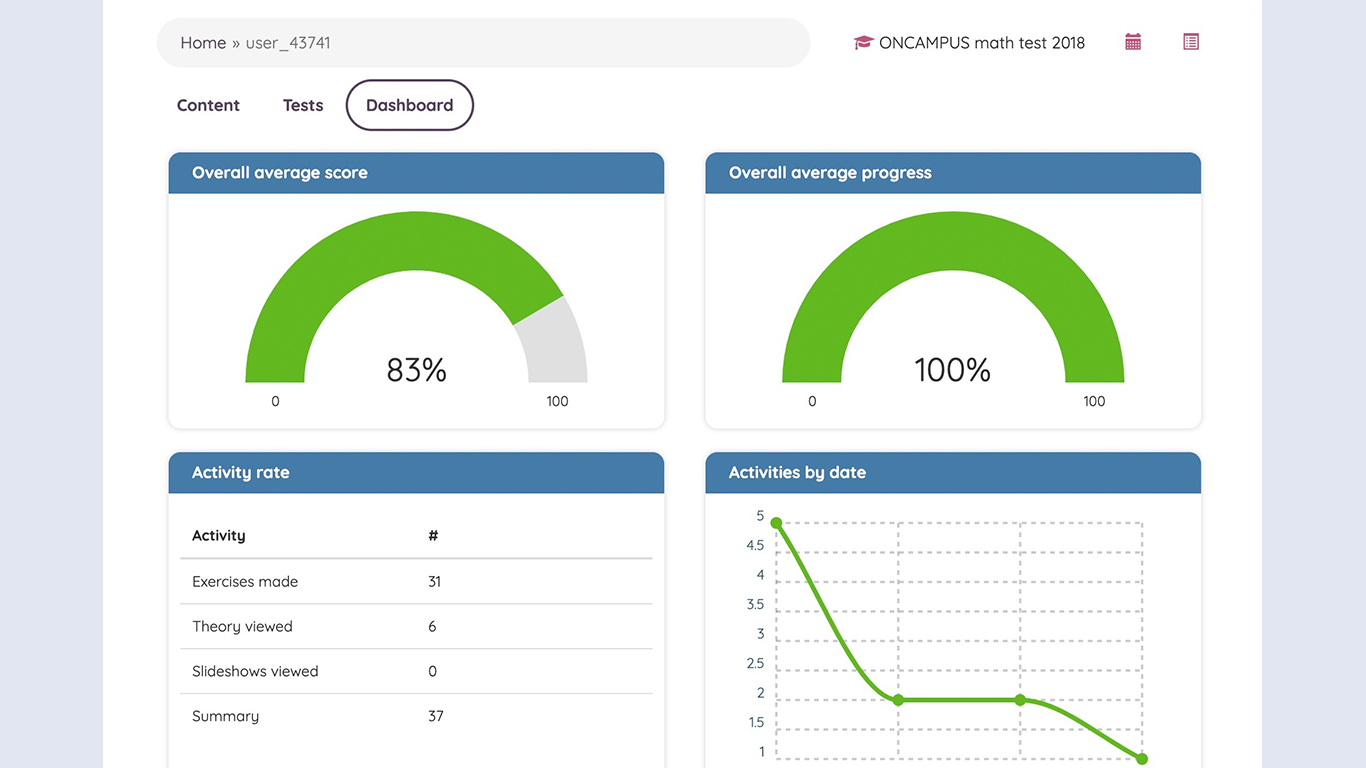For most people involved in higher education, summer has officially ended. With classes having started, or starting soon, university towns are getting more lively by the second. A new beginning, both for those receiving as well those providing education. With our minds rested and visions towards the future, it seems like an opportune moment to discuss up-and-coming ways we can innovate our teaching and learning this year. One of the most promising trends, driven by a surge in big data, is learning analytics.
At first glance, learning analytics seem like a wonderful idea that can instantly help any educator. However, reality is different. As Adam Newman, founder and managing partner of Tyton Partners, mentioned during a recent panel discussion during the Campus Tech 2016 conference, most people working in higher education are at a loss of how to use analytics to effectively improve the way they do things.
So what exactly are learning analytics, and how can they be employed?
Learning analytics can be defined as “the measurement, collection, analysis and reporting of data about the progress of learners and the contexts in which learning takes place.” With big data becoming more and more important in the general education field, institutions feel pressure to implement the use of data, and specifically data that visualizes the progress of a student’s learning. But how exactly can you do so, and what are the advantages?

Snapshot of SOWISO Individual Student Reporting
The most obvious benefit of emplying learning analytics is that you can use it as a tool for quality assurance and quality improvement. For example, when teachers see how students are tackling their course (in SOWISO’s case even individual exercises), they can proactively identify issues, and improve their teaching or curriculum design, by adding more focus on a specific topic, or redesigning a component of the course.
The great thing is that analytics can even be used to check on the performance of students while the teaching module is taking place. And as an added bonus, during the redesign of one of their courses the University of Maryland even discovered actively iterating on a course had their students perform better in subsequent courses.
Furthermore, learning analytics have been used as a tool for boosting retention rates. When you see students underperform, additional support can be provided to these students to improve their learning experiences and results. Marist College, for example, saw a 6% improvement in final grade by their at-risk students after they received an intervention. The University of New England saw attrition decline from 12% to 8%.
This has proven to work. Take Nottingham Trent University in the UK for example, who found that less than a quarter of their students who showed a low average engagement progressed to the second year, whereas over 90% of high average enagement students did so. This led to a succesful intervention campaign. And at the New York Institute of Technology, around 75% of students who did go on to the second year were predicted to be at-risk students by the model.
Of course, teachers are already keeping an eye out for students who are struggling. The technology works best when skillful educators use it. However, when institutions use analytics to identify students who are at risk, they can intervene at an earlier stage than would otherwise be possible. A great example of this is Purdue University, who found that they were able to identify at-risk students as early as the second week in the semester.
This works even better when the software used implements an effective AI, which will proactively alert teachers when a student shows signs of behavior which is proven to have a higher chance of leading to a failing grade. This means teachers can trust on the algorithm to analyze the data for them.
However, there are also a lot of benefits that might not seem obvious at first. For example, learning analytics can be an effective tool for identifying differential outcomes among your student population. One could look at the engagement and progress of, for example, socio-economical sub-groups. When institutions have this knowledge, they can provide additional support to students who belong to the identified sub-group to improve their learning experience and consequently their retainment.
One of the buzzwords in today’s education technology field is adaptive learning, which refers to systems that can tailor content to best fit a student’s personal learning path. These systems continually improve as they analyze the behavior of the student. Learning analytics are of incredible importance to adaptive learning, as they depend on data on aptitude and performance.
Adaptive learning may not be suitable for all aspects of higher education, but for most entry-level/introductory courses, they could be a great help. It is therefore no surprise to see higher ed instutions have been experimenting with it. For example, The Open Universities Australia used analytics to personalize their teaching, and were able to recommend content specifically chosen for individual students.
In Nanyang Technological University in Singapore, analytics have been used to more efficiently manage their institution, as it gives clear-cut guidelines to improve processes. In fact, they argue that it has helped create a culture of data-driven decision making across the entire institution. The Open Universities see things in a similar way, and have implemented learning analytics to develop an ‘analytics mindset’ amongst their employees.

Source: Source: Marketoonist.com
When students can see how they perform, it increases the agency they have over their own learning. In other words, it empowers them. And this empowerment in turn motivates them to work harder. At Purdue University for example, 74% of students said that being able to see their personal learning analytics increased their motivation. And a staggering 89% reported it to be a positive experience.
The Higher Education Commission concluded in one of their recent reports that analytics had “enormous potential to improve the student experience at university.” With solutions tackling the hurdles mentioned above, and the new year starting, it’s a great moment to look into what is on offer, and how learning analytics can help you.